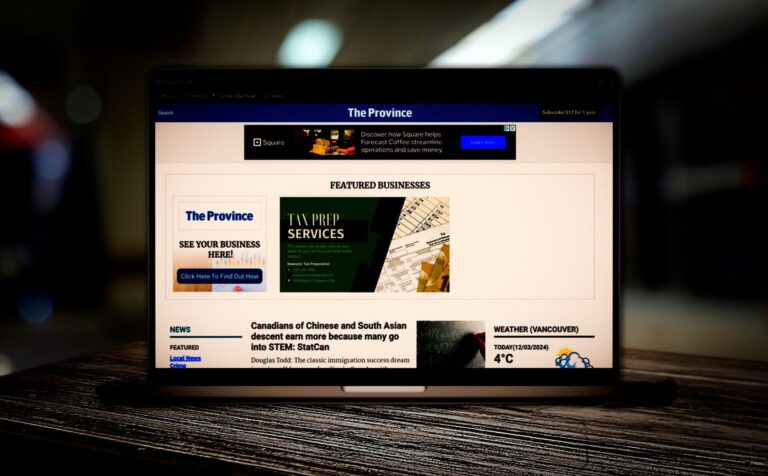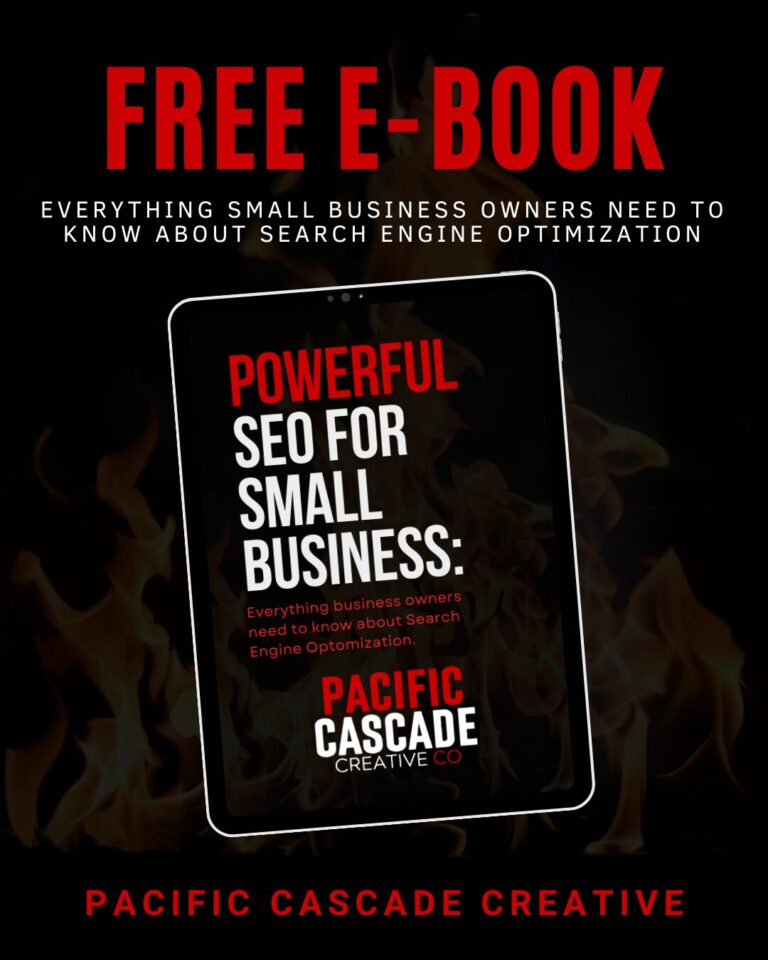

5 Ways You Can Instantly Improve Your Website SEO
If you have a website or are planning on getting one, then you have most likely heard the term search engine optimization, or SEO. Thats because, when it comes to a website, search engine optimization is the DNA of your website. It is how search engine identify what you do, where you do it, how you do it, and what makes you different from the billions of other websites on the internet. It’s the key to making your website visible to the right audience, helping you rank higher on search engine results pages like Google, where potential customers are looking for your products or services.
An SEO optimized website will not only attract more organic traffic, but it helps boost credibility, and will increase the chances of making sales. SEO isn’t just about helping search engines index your website, it also includes creating a better user experience through faster load times, mobile-friendly designs, and valuable content.
When optimized correctly, SEO will transform your website into a powerful tool for growth, helping you stand out above competitors and achieve tangible success.
In this blog, we’ll explore six actionable strategies to instantly improve your website’s SEO and maximize its impact.
1. Optimize Your Titles and Meta Descriptions
Optimizing titles and meta descriptions is a key strategy for improving your website SEO . These elements directly influence your click-through rate (CTR) by enticing users to click on your link in search results. A higher CTR signals to search engines like Google that your page is relevant and valuable, which can boost its ranking. Well-crafted titles and meta descriptions align with user search intent, helping attract the right audience while reducing bounce rates and improving engagement metrics.
Including primary and secondary keywords in these tags enhances your page’s relevance, while clear and concise meta descriptions set the right expectations, leading to a better user experience. Additionally, strong titles and descriptions support branding by creating a consistent and engaging tone that builds trust and recognition.
By outperforming competitors with compelling meta tags, your content can draw clicks even from higher-ranked pages. Optimized titles and descriptions are also crucial for mobile SEO, where space is limited, and they often lay the foundation for rich snippets, which increase visibility and CTR.
To achieve the best results, focus on incorporating target keywords naturally, keeping your meta tags concise, and highlighting clear benefits for users. Avoid keyword stuffing and prioritize readability and relevance to create a strong SEO impact.
How to Optimize:
- Include Keywords: Incorporate primary and secondary keywords naturally into website page titles and descriptions.
- Keep Titles Short and Descriptive: Ideally, stay under 60 characters for titles and 150-160 characters for meta descriptions.
- Add a Call-to-Action (CTA): Phrases like “Learn More,” “Get Started,” or “Shop Now” can entice clicks.
- Be Unique for Each Page: Avoid duplicating titles and meta descriptions across your site.
Example:
- Title: Affordable Web Design Services | Elevate Your Brand Today
- Meta Description: Get custom web design and SEO friendly solutions tailored to your business. Click now to see how we can help you grow!
2. Improve Page Load Speed
Improving page load speed is essential for boosting your website SEO performance and overall user experience. Search engines like Google prioritize fast-loading websites because they provide better experiences for users.
A slow site can lead to higher bounce rates, as visitors are more likely to leave if a page takes too long to load. This negatively impacts engagement metrics, which are key ranking factors. Faster loading speeds ensure users can quickly access your content, keeping them on your site longer and encouraging interactions such as clicks, form submissions, and purchases. Additionally, page speed is a direct ranking factor for Google, meaning a faster site has a better chance of appearing higher in search results.
On mobile devices, where users expect instant access, page speed is even more critical. Optimizing your website’s load time also reduces server strain and bandwidth usage, improving site performance under heavy traffic. To maximize these benefits, implement strategies like image optimization, browser caching, and minimizing unnecessary scripts.
By enhancing your page load speed, you not only improve your website SEO ranking but also create a smoother, more enjoyable experience for your visitors.
How to Improve Page Speed:
- Compress Images: Use tools like EWWW Image Optimizer to reduce image file sizes without sacrificing quality.
- Leverage Caching: Use plugins like W3 Total Cache to improve load times for repeat visitors to your website.
- Minify CSS, HTML, and JavaScript: Remove unnecessary code and whitespace.
- Choose Fast Hosting: Upgrade to a reliable hosting provider optimized for performance.
Tool Suggestions:
- Google PageSpeed Insights: Identifies speed issues and solutions for website SEO.
- GTmetrix: Provides detailed performance reports.
3. Focus on Mobile First
Mobile friendly design is a crucial factor in improving your website SEO and providing a seamless user experience. With the majority of web traffic now coming from mobile devices, search engines like Google prioritize mobile-friendly sites in their rankings. A site that isn’t optimized for mobile can lead to high bounce rates, as visitors may struggle with poor layouts, small text, or slow load times.
Mobile optimization ensures your content is easily accessible, visually appealing, and functional on smaller screens, keeping users engaged and reducing frustration. Additionally, Google uses mobile-first indexing, meaning it evaluates the mobile version of your site when determining rankings. A well-optimized mobile site enhances usability, improves engagement metrics, and increases the likelihood of users spending more time on your pages. It also caters to mobile-specific behaviours, such as touch navigation and local searches.
To achieve effective mobile optimization, focus on responsive design, fast loading speeds, clear navigation, and minimizing intrusive pop-ups. By prioritizing mobile users, you not only improve your SEO but also expand your reach to a wider audience and stay competitive in today’s digital landscape.
How to Optimize:
- Use Responsive Design: Ensure your site adjusts seamlessly across all devices.
- Test Mobile Usability: Use Google’s Mobile-Friendly Test tool to identify issues and improve website SEO.
- Simplify Navigation: Avoid cluttered menus or elements that are difficult to tap.
- Compress Resources: Make sure images, videos, and scripts are optimized for smaller screens.
Pro Tip:
Monitor Core Web Vitals metrics like Largest Contentful Paint (LCP) and Cumulative Layout Shift (CLS) for a better mobile experience.
4. Create High-Quality, Keyword-Rich Content
High-quality, keyword-rich content is a cornerstone of effective website SEO, directly impacting your site’s search rankings and user engagement. Search engines like Google prioritize content that is valuable, relevant, and well-written, ensuring it satisfies user intent.
By incorporating keywords naturally into your content, you signal to search engines what your page is about, increasing its chances of appearing for relevant queries. High-quality content also keeps visitors on your site longer, as it answers their questions, solves their problems, or provides insights they find useful. This improved dwell time and reduced bounce rate are positive signals that improve website SEO performance.
Additionally, keyword-rich content supports internal linking and helps your site rank for long-tail keywords, expanding your reach and attracting a diverse audience. It’s important to avoid keyword stuffing and instead focus on readability, structure, and delivering value. Engaging, well-optimized content not only improves search engine visibility but also builds trust with your audience, encouraging them to return, share, and convert.
Creating content that balances quality and keyword integration ensures your website stands out in search results and delivers lasting SEO benefits.
How to Create Better Content:
- Do Keyword Research: Use tools like SEMrush, Ahrefs, or Google’s Keyword Planner to find terms your audience is searching for.
- Write Engaging Headlines: Use powerful words and numbers to grab attention (e.g., “10 Proven Strategies for Local SEO”).
- Include Internal Links: Link to other pages on your site to improve SEO and navigation.
- Use Visuals: Break up text with images, infographics, and videos.
Content Checklist:
- Is your content solving a specific problem?
- Is it optimized for readability (short paragraphs, bullet points)?
- Does it include keywords naturally (without stuffing)?
5. Strengthen Your Backlink Profile
Backlinks are one of the most influential factors in improving your website SEO ranking and authority. When high-quality, reputable websites link to your content, search engines like Google view your site as trustworthy and valuable, which can significantly boost your rankings.
Backlinks act as “votes of confidence,” signalling that your content is worth referencing and sharing—the more relevant and authoritative the linking site, the stronger the impact on your website SEO. Backlinks also help drive referral traffic, bringing new visitors directly to your site and increasing overall engagement metrics like time on page and page views.
Additionally, a robust backlink profile can improve your site’s domain authority, making it easier to rank for competitive keywords. However, not all backlinks are created equal; links from spammy or irrelevant sites can harm your website SEO. To maximize the benefits, focus on earning links from credible sources through strategies like guest blogging, creating shareable content, and fostering partnerships.
A well-developed backlink strategy enhances your website’s visibility, credibility, and organic reach, making it a critical component of long-term SEO success.
How to Build Backlinks:
- Guest Posting: Write articles for reputable sites in your industry and link back to your website.
- Directory Submissions: Submit your site to relevant directories (e.g., local business directories).
- Outreach: Contact websites linking to outdated or broken content and suggest your site as an alternative.
- Shareable Content: Publish infographics, guides, or unique research that others will want to link to.
Pro Tip:
Focus on getting links from high-authority domains and avoid spammy link-building practices, as they can harm your rankings.
Conclusion
Search Engine Optimization (SEO) is vital for the success of any website in today’s competitive digital landscape. It ensures your site is visible to potential customers searching for the products or services you offer, driving organic traffic and increasing your chances of conversions.
Without SEO, your website could remain buried in search results, missing out on valuable opportunities. Website SEO enhances user experience by improving site speed, mobile friendliness, and content quality, all of which are key ranking factors for search engines like Google.
By optimizing website SEO, you build credibility, establish authority in your industry, and gain a competitive edge. Whether you’re a small business or a growing enterprise, SEO is the foundation of online visibility and sustainable growth.
Start implementing these tips today to climb the rankings and attract more visitors.
Need Help With SEO?
At Pacific Cascade Creative, we specialize in crafting tailored website SEO strategies that drive measurable results. Whether you’re looking to boost traffic, climb search engine rankings, or convert visitors into loyal customers, we’ve got you covered.
Our team combines expertise in keyword research, on-page optimization, and content marketing to ensure your website stands out in search results. We don’t just improve rankings; we help you dominate your industry by targeting the audience that matters most.
Ready to transform your online presence? Partner with us today, and let’s create a strategy that works for you. Success starts here!






